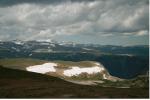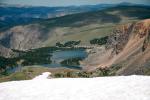Guarding the Loggerheads
by Emily Young
Sea turtles cry when they lay their eggs. Biologists say it’s their way of shedding excess salt, but Jim Wilson, Fort De Soto Park supervisor and sea turtle steward, thinks it’s something more. “I’m sure turtles have feelings,” he says.
If Jim is right, then a loggerhead hatchling trapped in Nest 30 must be feeling pretty lonely. Her 71 siblings left her behind when they burst from their nest and headed for the sea. With a crumpled right flipper, the tiny hatchling couldn’t follow. She huddles underneath the sand amid a pile of empty eggshells and waits.
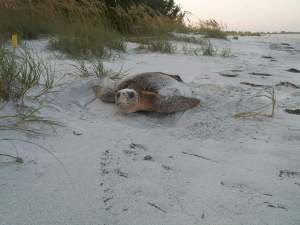
“Turtles have a built-in GPS,” says Fort De Soto Park ranger Jim Wilson. “Like salmon, turtles return to the place where they were born to lay their eggs."
That’s where park rangers come in. Jim Wilson tries to let the loggerhead nests on Fort De Soto beaches hatch naturally, but he can’t help worrying about them. A loggerhead hatchling is shorter than an average kitchen toothpick. They weigh 0.7 ounces. Storms drown them. Fire ants eat them. Ghost crabs attack them as they race across the beach to the ocean. As Jim often remarks, hatchlings are at the bottom of the food chain. He monitors the nests like a protective father, digs out the stragglers, and helps gimpy hatchlings stretch out their flippers. Once the hatchlings leave Fort De Soto, they’re on their own; but as long as they remain on the beach, they’re under his careful supervision.
Today, Jim’s mission is to perform a recovery on Nest 30, which means gathering data on the number of successful hatchings and searching for any stragglers. When most people are just waking up, he’s already busy inspecting sea turtle nests. Shortly after dawn on September 8, 2009, I meet him outside park headquarters.
“Good morning!” Jim sings out. His white hair and beard stand out against his suntanned skin. Dressed in his uniform – khaki shirt, gray shorts and a gold badge – the ranger looks wide awake.
A hatchling is waiting for him.
Jim motions me toward a white truck. “Hop in!” He rolls down the windows and a fresh sea breeze wafts in. Over the water, the clouds are lavender with pink smudges underneath. As we drive along deserted beaches, Jim stares at the thin blue lines of the Sunshine Skyway bridge in the distance. He says he feels sorry for people who cross the bridge on their way to desk jobs.
Some people wouldn’t like getting up at 5 a.m., but Jim likes to check the turtle nests for activity before any visitors appear at the park. We pass a woman walking her black lab near the picnic area. She and her dog come to Fort De Soto early every morning. “Lucky dog,” Jim says.
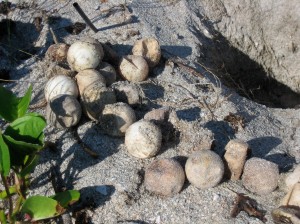
Over 1,000 loggerheads hatched on Fort De Soto’s beaches last year. Rangers recovered another 18 from their nests. One was the tiny hatchling Jim rescued.
On the channel side of the beach, Jim stops the truck for his first nest check of the day. He walks over to a mound of sand, which looks like a small dune. A yellow sign warns visitors not to disturb Nest 38. Bending over, Jim sticks his fingers in the sand to see if it’s soft. He points out the concave area, which he says means “activity.” In other words, some little sea turtles are getting impatient inside their nest. Who wouldn’t feel cooped up after spending almost two months underground?
Turtles are buried alive.
It takes a team effort to dig out. Cracking his shell open with his egg tooth, the first hatchling snacks on the yoke, gathers strength, and waits for his siblings to hatch. Once most of the group hatches, it’s time to climb.
The scrambling hatchlings kick sand into the bottom of their nest, raising the level bit by bit and creating a kind of turtle lift to the top. They wait near the surface until the sand temperature drops after dusk, then pop from the nest and race to the ocean. Strength lies in numbers. If a straggler is left behind, he won’t be able to climb out alone.
For now, Jim is satisfied with Nest 38. On the way back to the truck, he walks past a ghost crab hole and shouts, “Stay down there!”
Ghost crabs are pale: the kind of pale that looks as if it would rub off like too much white powder. At night, they drag baby loggerheads into their holes and eat them for dinner. The next morning, trails in the sand whisper how the hatchling was taken. The ghost crabs’ scuttling sideways gait makes them look even guiltier.
Until they hatch, the eggs inside Nest 38 are relatively safe from predators. When rangers first discover a nest, they put wire mesh over it to keep out raccoons and coyotes. They record the coordinates and landmarks on a nesting form. Three days after the nest is emptied, they perform a “biological evaluation,” or “recovery.”
Nest 30 is scheduled for recovery today, but Jim can’t find it.
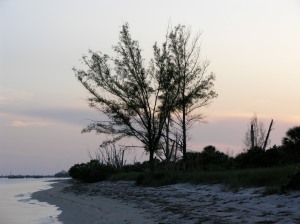
By October, Fort De Soto’s sea turtle season is over, and so is Jim’s role as turtle steward. Next May, the process will start all over again.
He gets out of the truck and searches for it along the beach. Instead of Nest 30, he finds a half-filled water balloon in the scrub. “A balloon!” he says, throwing it in his truck. “They’re really bad. You know what these are mistaken for in the water? Jellyfish.”
As we walk along the shore, Jim describes a juvenile loggerhead’s life in the ocean. In summer and early fall, the Gulf Stream carries floating sargassum weed close to Fort De Soto’s beaches. After hatchlings race into the ocean, they swim 15-20 miles until they reach the sargassum. “That’s their life blood for a while,” Jim explains. The hatchlings cling to the golden algae, eating bugs, worms, snails and barnacles snagged in the weeds. Their camouflaged upper shells, or carapaces, match the green and yellow hues of the sargassum. Safe in their drifting habitat, the turtles spend their early years riding ocean currents around the world. But sometimes a jellyfish or a balloon tempts them to leave their home. “One of these little babies floats by” – Jim indicates the balloon – “and one of the turtles might peel off o’ the grass to get it, and get picked off by a dolphin or a cobia.”
Once the shells of juvenile loggerheads grow to the size of dinner plates, they leave the open ocean to forage in shallower coastal waters. Their size makes them less likely to become lunch. But man-made dangers still claim their lives.
Two years ago, a fisherman on Fort De Soto’s Gulf Pier called Jim for help. He had hooked a sea turtle and cut her loose. It was bad timing. A lightning storm raged over the Gulf of Mexico.
Jim found the turtle struggling in the ocean just off the beach. A stainless steel cable with multiple hooks was wrapped around her body, pinning three flippers. One hook pierced her mouth and another punctured a rear flipper. She fought to keep her head above the choppy waves as lightning flickered across the sky. Rain pummeled the sand. “The lightning was the stuff that was scaring me. It was popping all around us,” Jim says.
When the tide swept her onshore, he set to work. He pushed the first hook through her mouth and cut off the barb, freeing her body from the cable. She raced back to the ocean, pulling Jim along for what he calls a “turtle ride.” Loggerheads can swim up to 15 mph. Jim had just a few seconds to cut the cable and let her go. The remaining hook would rust out of her flipper. Unlike many loggerheads, this one survived her encounter with a fishing line.
Jim doesn’t often get the chance to rescue adult sea turtles. Rescuing trapped hatchlings is another matter. This year, he and the other rangers will search for them in all 38 loggerhead nests at Fort De Soto. Usually it isn’t in the middle of a lightning storm, which makes the process easier.
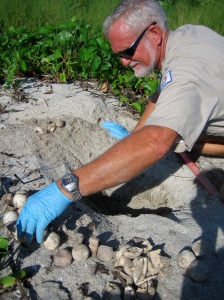
When rangers first discover a nest, they put wire mesh over it to keep out raccoons and coyotes. They record the coordinates and landmarks on a nesting form. Three days after the nest is emptied, they perform a “biological evaluation,” or “recovery.”
But today there seems to be a problem. Jim calls another ranger for back-up.
They get out their tools: a yellow shovel, a hand-held GPS and a Garrett Crossfire metal detector. “Welcome to the wonderful world of turtling,” Jim says. Shovel in hand, he stares at the nesting form like it’s a treasure map and paces back and forth. He gently plunges the shovel into the sand as he walks: scrape, scrape, scrape.
According to the nesting form, Nest 30 is near an osprey pole. There are lots of osprey poles at Fort De Soto. We drive to another beach.
On the way, a Laughing Gull tries to fly across the road, his wing flapping uselessly. Jim gets out of the truck. “Hey buddy, what’s going on with you?” he asks the gull. He catches the bird, deftly.
The gull is quiet as Jim puts him in a cage in the back of the truck. Later he’ll be taken to the Suncoast Seabird Sanctuary. “It’s not just turtling,” Jim says. Saving the birds is just as important as the turtles.
On the bayside of the beach, the rangers finally locate Nest 30 and Jim begins the recovery. He wears blue gloves to protect his hands because he doesn’t want to smell like turtle eggs all day.
He scoops out handfuls of sand until he finds the first egg, which looks like a small white ball. It didn’t hatch. The next egg is in pieces, which means its hatchling is now somewhere in the ocean. Jim looks pleased. His face is bright red from the heat, and beads of sweat glitter on his forehead and neck. Just over his shoulder, the bare branches of a dead Australian pine don’t provide any shade.
He piles the round eggs up like golf balls. The smell is bothering him.
What causes it?
“Rotten eggs.”
But Jim’s next discovery makes us forget the smell.
He pulls out another handful of eggs. A live hatchling wriggles among the broken shells. “We’ve got a turtle!” Jim announces. Her short flippers squirm furiously. Sand coats her dark carapace and she squints against the sunlight.
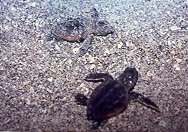
A loggerhead hatchling is shorter than an average kitchen toothpick. They weigh 0.7 ounces. Storms drown them. Fire ants eat them. Ghost crabs attack them as they race across the beach to the ocean.
When I hold her up, she flaps her front flippers as if trying to swim through the air. “She’s been trapped for a while. She’s ready to go,” Jim says.
Nobody knows if the hatchling is a girl or a boy. Warm sand makes girls. Cooler sand makes boys. In-between temperatures yield a mixture. But Jim doesn’t know how hot or cold the sand was when this hatchling grew inside her egg.
For now, Jim decides she’s a girl.
Her right flipper is crumpled – Jim says it has a “giddy-up” in it. He puts her in a sand-filled bucket to stretch. She crawls in circles, her flippers scraping the edges of the container. “That’s the sound we like to hear,” Jim says, happy to have found an energetic hatchling.
The rangers record the nest productivity on the form: 71 hatched eggs, 42 infertile and 7 discernable embryos. One live turtle.
Back at headquarters, Jim places her in a larger bucket and sets a cardboard box on top. She has a long journey ahead, and he wants her to rest before he releases her tonight.
A hatchling’s chance of survival is 1 in 2500. With Jim nearby, this hatchling won’t need to worry about ghost crabs or gulls as she crosses the beach. But the sea has its own set of hazards. “Hatchlings are at the bottom of the food chain,” Jim reminds me, in case we see a large fish snatch her from the ocean as he releases her.
At 7 p.m., the darkening sky is streaked with pink and yellow stripes. Jim takes the hatchling out of her bucket and places her on the soft sand, hoping she’ll scurry into the ocean. She doesn’t budge. After a while, she stretches her long neck forward as if smelling the water. Jim is encouraged. “That’s right! Big strong girl!” he says. He moves her onto the hard-packed sand near the water’s edge.
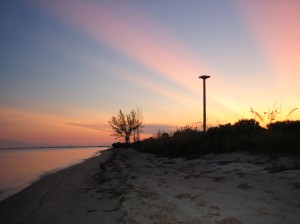
At 7 p.m., the darkening sky is streaked with pink and yellow stripes
She lets the wave wash carry her in to shore, out to sea, in to shore. Jim hovers over her like a father watching his daughter take her first steps. “Come on baby girl,” he coaxes. Finally, a wave drags her into deeper water and she falls to the bottom. Jim yanks off his shoes and socks and wades in. He puts his hand under her and helps her take a breath. After all, he just rescued her from starving. He’s not about to watch her drown.
He takes his hand away. The hatchling flaps her flippers and propels herself to the surface. In the clear water, it looks like she’s flying. Her head pops up. Her tiny mouth opens. Bubbles rise as she gulps in a breath of air.
She is exhausted from the effort. Jim fishes her out of the water and points out her carapace. The sand has washed away, revealing the green and yellow shell underneath.
She is dressed for sargassum grass.
But the hatchling isn’t ready for her grassy home yet. Jim takes her back to headquarters so she can rest before beginning the 20-mile swim to the sargassum weed. If she is too weak to swim away, she may live the rest of her life in captivity at the Clearwater Marine Science Center.
Three hours later, at 10 p.m., Jim gives the hatchling one more chance. He covers his flashlight with a red lens, knowing sea turtles can’t see red, so she won’t be distracted by the artificial light. She needs to navigate by the light of the moon. This time, the hatchling crawls to the water’s edge and hesitates for a second before scurrying into the ocean. An outgoing tide sweeps her away. Twenty meters out, she surfaces to take a breath, a speck in the middle of the ocean. Jim watches her come up once more before she vanishes underwater.
The rest of the journey is up to her.
By October, Fort De Soto’s sea turtle season is over, and so is Jim’s role as turtle steward. Next May, the process will start all over again. “He’s a true steward of the environment,” says Terry Tomalin, the St. Petersburg Times Outdoors and Fitness Editor. “Having someone at Fort De Soto who truly cares and has a personal stake in the turtle population probably makes a difference in the percentage of turtles who hatch and make it to the sea.”
Over 1,000 loggerheads hatched on Fort De Soto’s beaches last year. Rangers recovered another 18 from their nests. One was the tiny hatchling Jim rescued. If she survives to adulthood, Fort De Soto will see her again in 15 to 30 years. “Turtles have a built-in GPS,” Jim says. “Like salmon, turtles return to the place where they were born to lay their eggs.” Thirty years from now, Fort De Soto’s beaches won’t be cluttered with condos. Hatchlings who return as adults will see the same stretch of beach they left as babies.
A ranger will be waiting to watch over their eggs.
 Emily Young is a freelancer who enjoys writing anything – whether features or fiction – if it makes for a good story. She has lived on Florida’s Gulf Coast her entire life and has never seen snow. She is currently completing an undergraduate degree at the University of South Florida. For a glimpse into Emily’s world, visit her blog, The Essential Emily.
Emily Young is a freelancer who enjoys writing anything – whether features or fiction – if it makes for a good story. She has lived on Florida’s Gulf Coast her entire life and has never seen snow. She is currently completing an undergraduate degree at the University of South Florida. For a glimpse into Emily’s world, visit her blog, The Essential Emily.
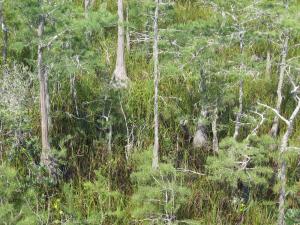
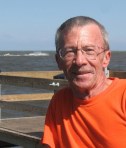







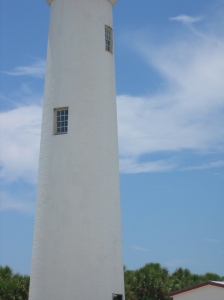


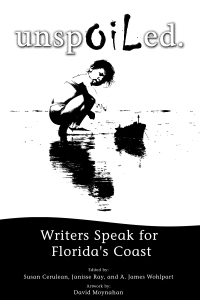
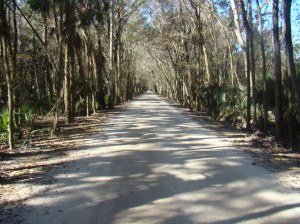

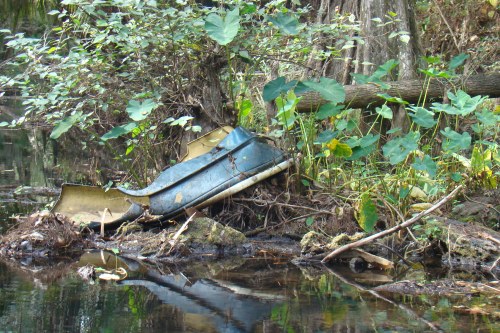
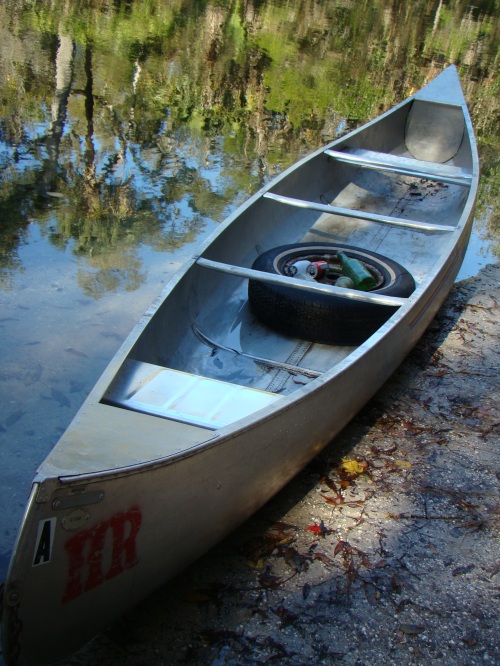 How to Fill a Tin Canoe: pick up and paddle.
How to Fill a Tin Canoe: pick up and paddle. Early on, White, who died in 2006, details building a tin canoe like the one he fashioned from a chicken house roof as a child reared in the “Red Hills” region of south Georgia during World War II. Some passages read like a conversational manual that might interest boaters more than others. But try not to skim these parts. White’s no nonsense writing style makes it worthwhile with snippets about shaping tin such as, “Do it in your backyard so you won’t attract too much attention (this is a one man project . . . you don’t want no destructive supervision.)”, and “Don’t let yourself get frustrated and frantic … hell, man, tin is cheap.” You realize White’s lifelong affection for his childhood boat when he writes, “I seldom build a boat that turns out all that much better than those tin canoes.”
Early on, White, who died in 2006, details building a tin canoe like the one he fashioned from a chicken house roof as a child reared in the “Red Hills” region of south Georgia during World War II. Some passages read like a conversational manual that might interest boaters more than others. But try not to skim these parts. White’s no nonsense writing style makes it worthwhile with snippets about shaping tin such as, “Do it in your backyard so you won’t attract too much attention (this is a one man project . . . you don’t want no destructive supervision.)”, and “Don’t let yourself get frustrated and frantic … hell, man, tin is cheap.” You realize White’s lifelong affection for his childhood boat when he writes, “I seldom build a boat that turns out all that much better than those tin canoes.” 